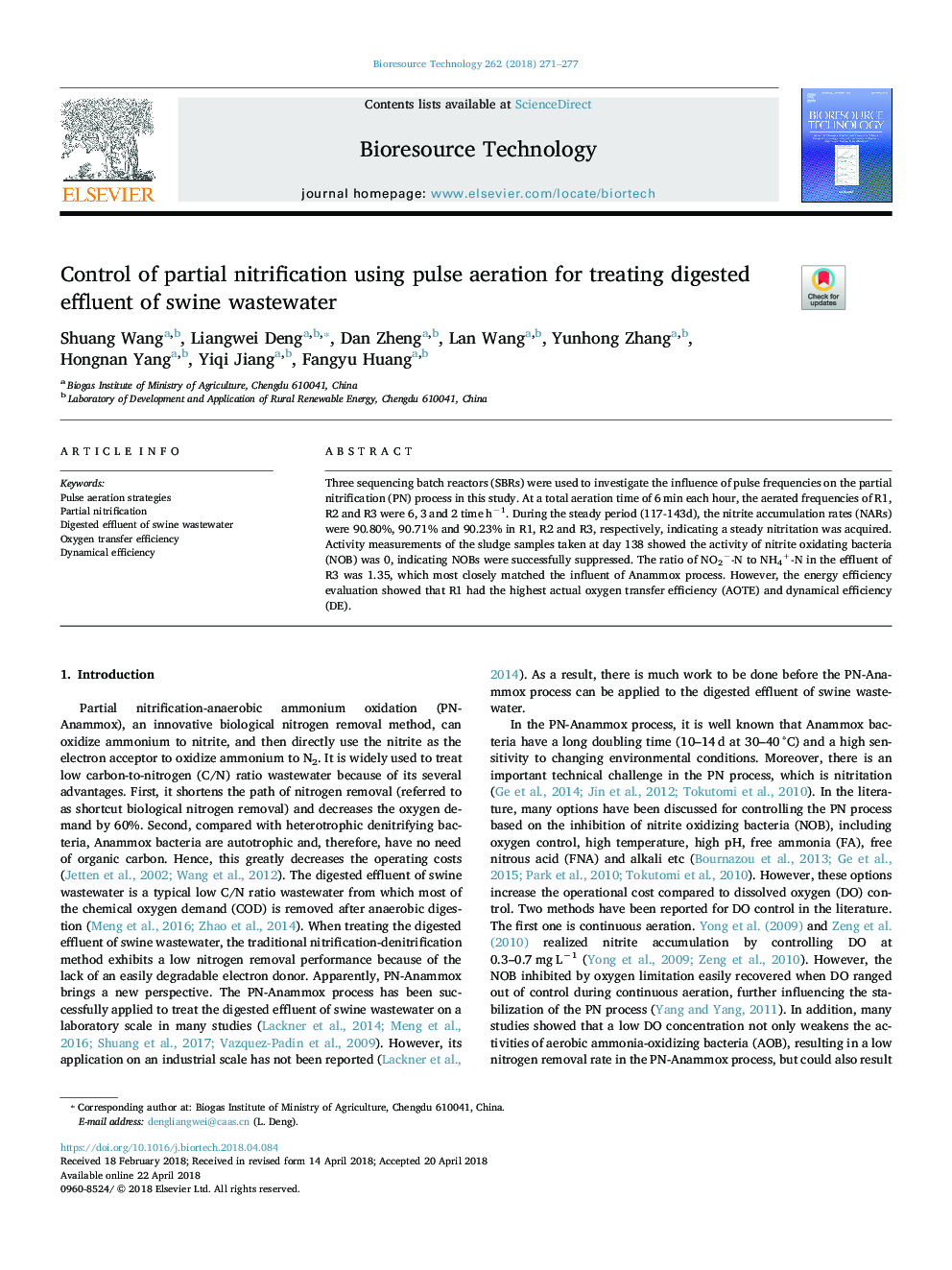| Article ID | Journal | Published Year | Pages | File Type |
|---|---|---|---|---|
| 7066847 | Bioresource Technology | 2018 | 7 Pages |
Abstract
Three sequencing batch reactors (SBRs) were used to investigate the influence of pulse frequencies on the partial nitrification (PN) process in this study. At a total aeration time of 6â¯min each hour, the aerated frequencies of R1, R2 and R3 were 6, 3 and 2 time hâ1. During the steady period (117-143d), the nitrite accumulation rates (NARs) were 90.80%, 90.71% and 90.23% in R1, R2 and R3, respectively, indicating a steady nitritation was acquired. Activity measurements of the sludge samples taken at day 138 showed the activity of nitrite oxidating bacteria (NOB) was 0, indicating NOBs were successfully suppressed. The ratio of NO2â-N to NH4+-N in the effluent of R3 was 1.35, which most closely matched the influent of Anammox process. However, the energy efficiency evaluation showed that R1 had the highest actual oxygen transfer efficiency (AOTE) and dynamical efficiency (DE).
Related Topics
Physical Sciences and Engineering
Chemical Engineering
Process Chemistry and Technology
Authors
Shuang Wang, Liangwei Deng, Dan Zheng, Lan Wang, Yunhong Zhang, Hongnan Yang, Yiqi Jiang, Fangyu Huang,
